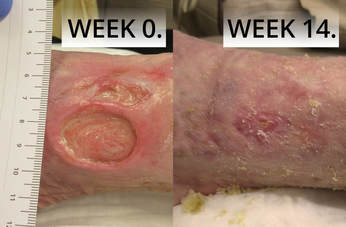
Another impressive fast healing of a chronic ulcer in an elderly patient with rheumatoid arthritis. Wounds like this are challenging on many levels and this case is no exception: even with sharp debridement combined with various wound care products the wound lingered and could not reach any significant healing progress.
The patient could no longer tolerate sharp debridement due to wound-related pain when Enluxtra treatment has started. Even without debridement it healed in record time!
Patient's history and previous treatment
A 74-year-old white female with history of rheumatoid arthritis had her left lateral ankle wound for 12 months. By the end of 12 months the patient’s pain was so severe the wound could not be cleansed appropriately or debrided. The patient has been taking Tramadol for pain. Other treatments which included enzymatic debriding ointment, steroid cream, Sorbact, silver alginate, Kerramax, Iodosorb, Drawtex, silver Restore dressing, hydrogel, and Epifix have not produced any positive changes.
Enluxtra to the rescue
From the time Enluxtra treatment started no sharp debridment procedures were performed. Enluxtra was applied to the wound with a generous overlap onto healthy surrounding skin and changed once a week. With each dressing change the amount of slough in the wound bed has been reduced and by week 5 wound-related pain disappeared. After 12 weeks the wound has been healed.
A year of struggle with pain, numerous ineffective treatment attempts with other products and all it took only 3 months of Enluxtra to close this difficult wound.
Scroll down to view photos of wound progress and clinical notes.
Learn more about Enluxtra
The patient could no longer tolerate sharp debridement due to wound-related pain when Enluxtra treatment has started. Even without debridement it healed in record time!
Patient's history and previous treatment
A 74-year-old white female with history of rheumatoid arthritis had her left lateral ankle wound for 12 months. By the end of 12 months the patient’s pain was so severe the wound could not be cleansed appropriately or debrided. The patient has been taking Tramadol for pain. Other treatments which included enzymatic debriding ointment, steroid cream, Sorbact, silver alginate, Kerramax, Iodosorb, Drawtex, silver Restore dressing, hydrogel, and Epifix have not produced any positive changes.
Enluxtra to the rescue
From the time Enluxtra treatment started no sharp debridment procedures were performed. Enluxtra was applied to the wound with a generous overlap onto healthy surrounding skin and changed once a week. With each dressing change the amount of slough in the wound bed has been reduced and by week 5 wound-related pain disappeared. After 12 weeks the wound has been healed.
A year of struggle with pain, numerous ineffective treatment attempts with other products and all it took only 3 months of Enluxtra to close this difficult wound.
Scroll down to view photos of wound progress and clinical notes.
Learn more about Enluxtra
- View Enluxtra case studies to see how it can heal the most difficult, stubborn wounds that resisted previous treatment with other products.
- Find out about Enluxtra difference.
- To buy Enluxtra dressings visit our online store, or explore other purchasing options.
- Order free samples available to medical professionals.
- Read other posts in our blog.
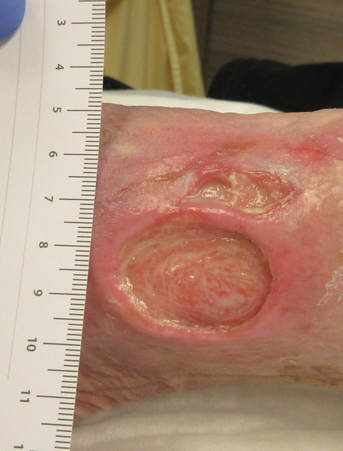
Week 0.
This severely painful wound could not be properly cleansed or debrided. Enzymatic ointment was ineffective. At presentation the wound measured 3.2cm x 3.7cm x 0.2cm with copious purulent drainage and pain 5 out of 10. The wound bed contained 50% slough, 50% pink/red granulation tissue, with macerated peri-wound.
Enluxtra dressing was started.
This severely painful wound could not be properly cleansed or debrided. Enzymatic ointment was ineffective. At presentation the wound measured 3.2cm x 3.7cm x 0.2cm with copious purulent drainage and pain 5 out of 10. The wound bed contained 50% slough, 50% pink/red granulation tissue, with macerated peri-wound.
Enluxtra dressing was started.
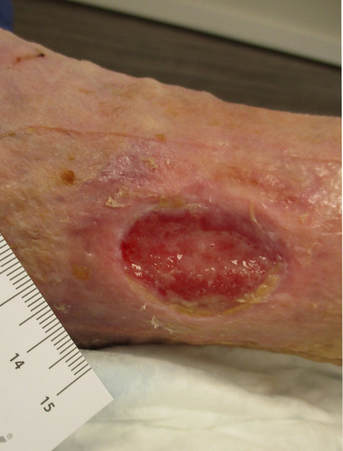
Week 5.
Within a month of Enluxtra dressing treatment, the wound edges started contracting. The wound measured 3.2cm x 2.3cm x 0.2cm with minimal drainage.
The pain was gone entirely.
The wound bed contained 25% slough, 75% pink/red granulation tissue with moist peri-wound but no maceration. Drastic pain reduction and decreased slough and drainage marked this assessment.
Within a month of Enluxtra dressing treatment, the wound edges started contracting. The wound measured 3.2cm x 2.3cm x 0.2cm with minimal drainage.
The pain was gone entirely.
The wound bed contained 25% slough, 75% pink/red granulation tissue with moist peri-wound but no maceration. Drastic pain reduction and decreased slough and drainage marked this assessment.
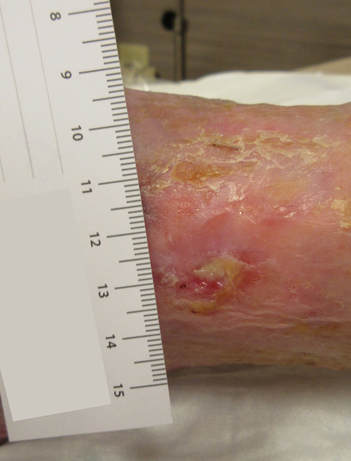
Week 11.
By day 72 the wound size has shown drastic reduction to 1cm x 0.8cm x 0.1cm with minimal drainage and no pain.
Most of the original open wound bed was re-epithelialized with the remaining open area of 75% slough and 25% pink granulation tissue.
The peri-wound was dry but healthy.
By day 72 the wound size has shown drastic reduction to 1cm x 0.8cm x 0.1cm with minimal drainage and no pain.
Most of the original open wound bed was re-epithelialized with the remaining open area of 75% slough and 25% pink granulation tissue.
The peri-wound was dry but healthy.
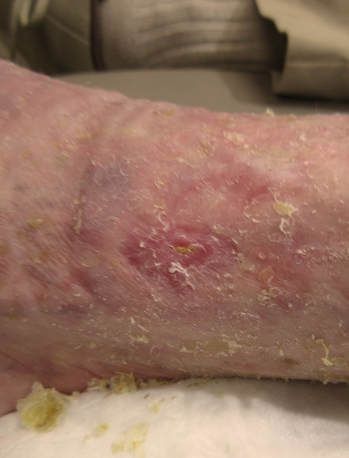
Week 14.
Follow-up visit – the wound remained closed.
Follow-up visit – the wound remained closed.

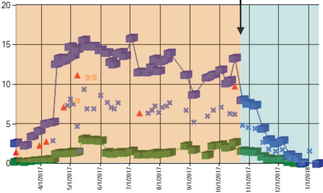
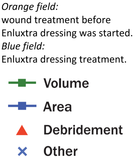
 RSS Feed
RSS Feed
